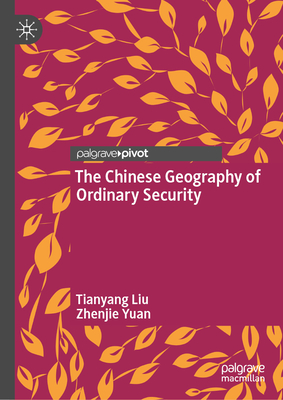The Chinese Geography of Ordinary Security

The Chinese Geography of Ordinary Security
This book explores the geographies of (in-)security for ordinary Chinese. It advocates for a critical examination of the geography of Chinese school violence, arguing that schools are not simply containers for state policy but active channels through which spatial securitization and everyday violence converge. By analyzing the pervasive fear in schools, the analysis unravels the spatial dimensions of violence--its landscape, continuum, and social support networks. The narrative then shifts to public hospital spaces in China, arguing that local forms of hospital violence (known as Yi Nao) transforms these institutions into battlegrounds for moral and political resources. Contesting parties include patients, Yi Nao gangs, medical professionals, government agencies, and hospital administration. The final section demystifies security as applied to graves, often distanced from our daily existence, by adapting the cultural and spatial tenets of Feng Shui. It sheds light on the pursuit of Feng Shui-defined security during burial site selection and related conflicts in rural China. This study offers a compelling and vivid study of the ways that Chinese engage with their built environment, and will interest scholars of Asia, of geography and of politics.
PRP: 418.41 Lei
Acesta este Pretul Recomandat de Producator. Pretul de vanzare al produsului este afisat mai jos.
376.57Lei
376.57Lei
418.41 LeiIndisponibil
Descrierea produsului
This book explores the geographies of (in-)security for ordinary Chinese. It advocates for a critical examination of the geography of Chinese school violence, arguing that schools are not simply containers for state policy but active channels through which spatial securitization and everyday violence converge. By analyzing the pervasive fear in schools, the analysis unravels the spatial dimensions of violence--its landscape, continuum, and social support networks. The narrative then shifts to public hospital spaces in China, arguing that local forms of hospital violence (known as Yi Nao) transforms these institutions into battlegrounds for moral and political resources. Contesting parties include patients, Yi Nao gangs, medical professionals, government agencies, and hospital administration. The final section demystifies security as applied to graves, often distanced from our daily existence, by adapting the cultural and spatial tenets of Feng Shui. It sheds light on the pursuit of Feng Shui-defined security during burial site selection and related conflicts in rural China. This study offers a compelling and vivid study of the ways that Chinese engage with their built environment, and will interest scholars of Asia, of geography and of politics.
Detaliile produsului









